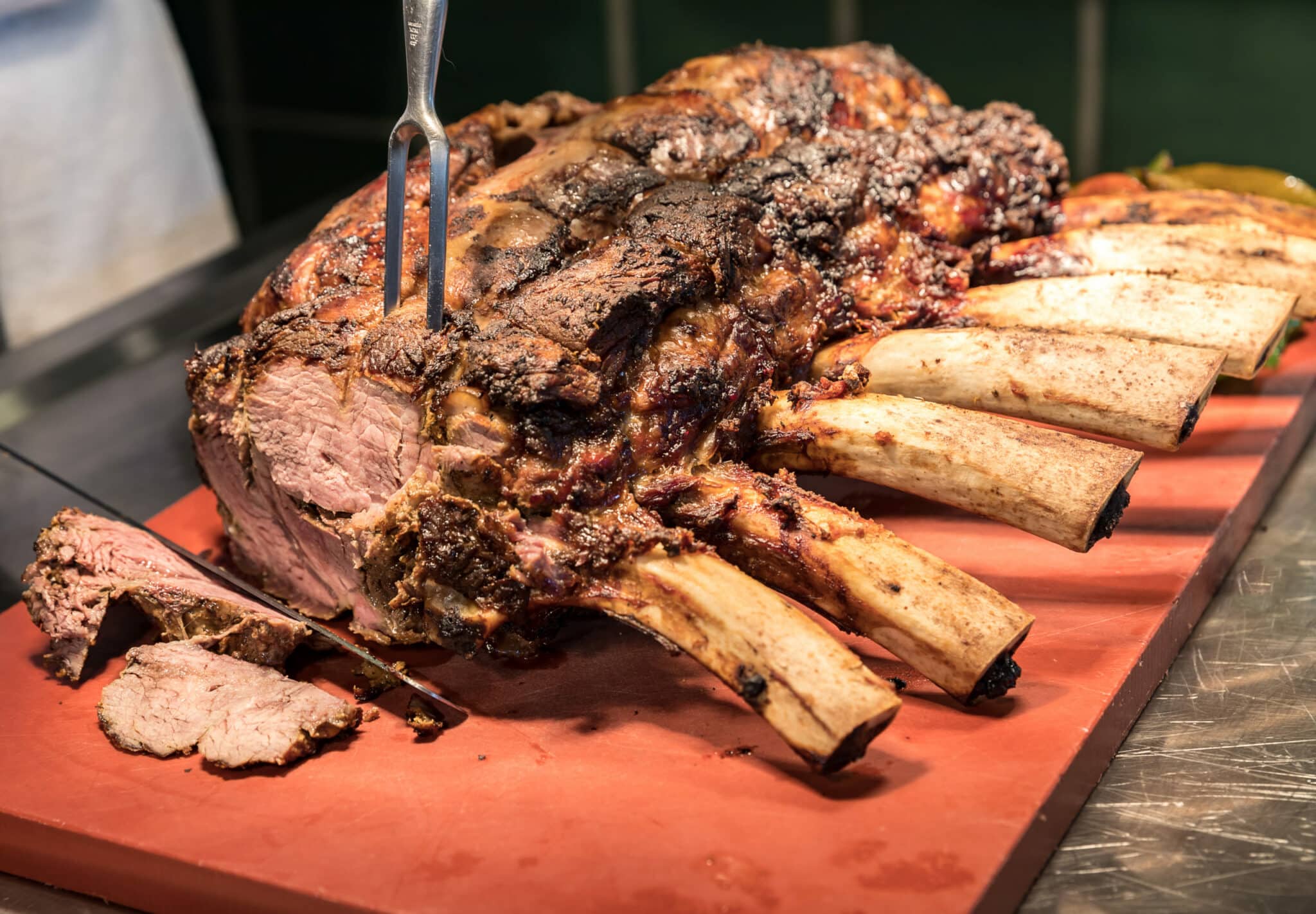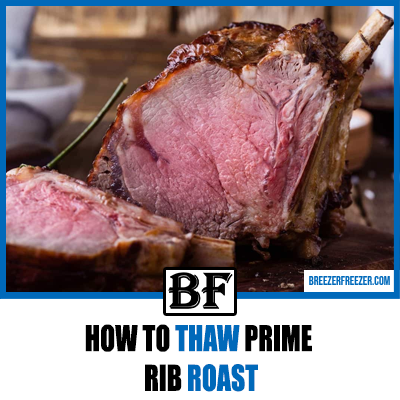Introduction: Unveiling the Secrets of Rib Roast Thawing
Envision the perfect holiday feast, graced by a succulent, golden-brown standing rib roast. But achieving this culinary masterpiece begins not in the oven, but in the refrigerator, where proper thawing is essential for a safe and flavorful experience. Join us as we delve into the art of thawing a standing rib roast, guiding you through the intricacies of this culinary journey to ensure a delectable and memorable meal.

Image: blogchef.net
Thawing a standing rib roast is a crucial step in preparing this centerpiece of your festive table. Whether you’re a seasoned home chef or embarking on this culinary adventure for the first time, understanding the proper thawing techniques will empower you to achieve a perfectly cooked roast that will delight your family and friends.
Understanding the Science of Thawing a Standing Rib Roast
To master the art of thawing, it’s essential to comprehend the scientific principles behind this process. Frozen meat holds significant amounts of ice crystals within its cellular structure. The goal of thawing is to gently convert these ice crystals back into liquid, ensuring even cooking and preserving the integrity of your roast.
Rushing the thawing process by exposing the roast to excessive heat can result in uneven thawing, compromising both the texture and flavor of your final dish. On the other hand, thawing at too slow a pace can provide an environment for harmful bacteria to thrive. Striking the perfect balance between these extremes is key to successful thawing.
The Two Methods of Thawing a Standing Rib Roast
To thaw a standing rib roast safely and effectively, two primary methods are available:
Method 1: Refrigerator Thawing – Slow and Steady
Refrigerator thawing is the preferred method for larger cuts of meat like standing rib roasts. This method involves placing the frozen roast in your refrigerator’s coldest section, allowing for gradual thawing over several days. While this approach is slower than other methods, it provides the most consistent and safe thawing, minimizing the risk of bacterial growth.

Image: breezerfreezer.com
Method 2: Cold Water Thawing – Expedited Immersion
Cold water thawing offers a more rapid approach compared to refrigerator thawing. Submerge the sealed roast in a cold water bath, ensuring the water remains at or below 40°F (4°C). Change the water every 30 minutes to maintain a consistently cold environment. Using this method, thawing time is significantly reduced, allowing for quicker meal preparation.
Calculating Thawing Time for Your Standing Rib Roast
Determining the appropriate thawing time for your standing rib roast is essential. The rule of thumb is to allow approximately 24 hours of thawing time per 5 pounds of roast weight. This means a 10-pound roast would require roughly 2 days of refrigerator thawing or 12 hours of cold water thawing.
Ensuring Safe Thawing Practices
While thawing your standing rib roast, food safety should be your utmost priority. Follow these guidelines to prevent the growth of harmful bacteria that can cause foodborne illness:
-
Avoid thawing at room temperature: Thawing at room temperature creates an ideal environment for bacteria to multiply, jeopardizing the safety of your roast.
-
Keep the refrigerator below 40°F (4°C): Ensure your refrigerator is set to the appropriate temperature to prevent bacteria from thriving.
-
Do not refreeze thawed meat: Once thawed, do not refreeze the roast, as this can increase the risk of bacterial contamination.
Maximizing Flavor and Tenderness Through Proper Thawing
Beyond safety, maximizing the flavor and tenderness of your standing rib roast is paramount. Appropriate thawing enhances the roast’s natural flavors and ensures an evenly cooked dish:
-
Uncover the roast: Remove any packaging or coverings from the roast to facilitate even thawing.
-
Elevate the roast: Place the roast on a wire rack set over a baking sheet or dish to prevent it from sitting in any accumulated liquid, preserving its flavor and texture.
-
Flip the roast: Occasionally flip the roast to ensure all sides thaw evenly.
Preparing Your Standing Rib Roast for Cooking
Once your standing rib roast is fully thawed, it’s time to prepare it for cooking. Pat the surface dry with paper towels to remove excess moisture. Season generously with salt, pepper, and any desired herbs or spices. Allow the roast to come to room temperature for about an hour before roasting to promote even cooking.
How Long To Thaw A Standing Rib Roast
The Culinary Journey Awaits
Armed with this comprehensive guide, you now embark on a culinary adventure that will culminate in a delectable standing rib roast, the centerpiece of your festive feast. Remember, patience and careful thawing are the key ingredients to a完美的烹饪体验.
As you savor each succulent bite, take pride in the fact that you have mastered the art of thawing, ensuring a safe and flavorful dining experience for your loved ones. May this culinary journey be filled with joy, laughter, and the unforgettable taste of a perfectly cooked standing rib roast. Happy feasting!